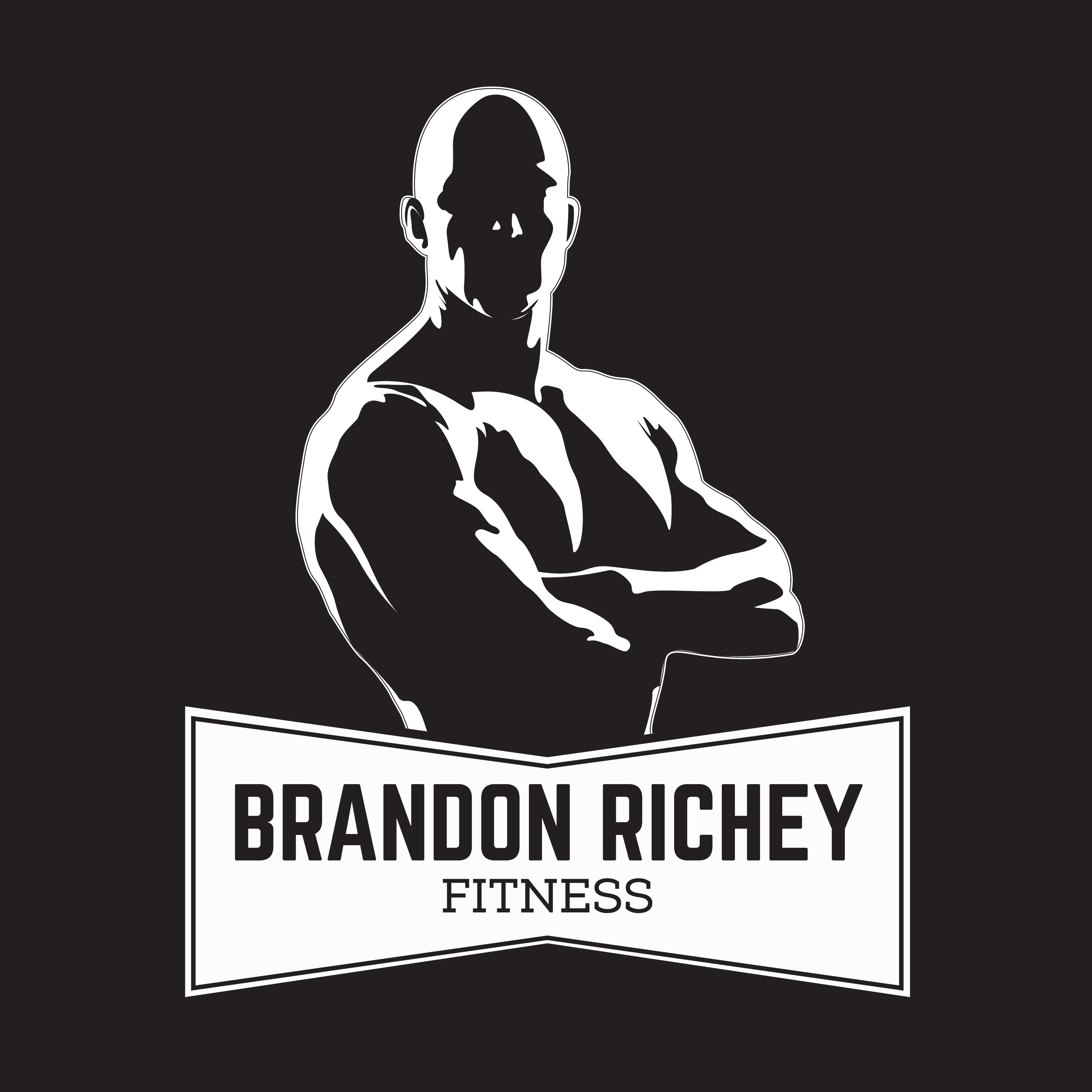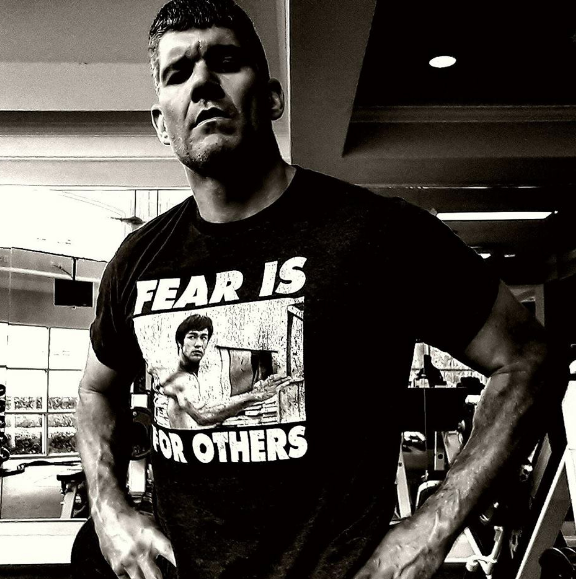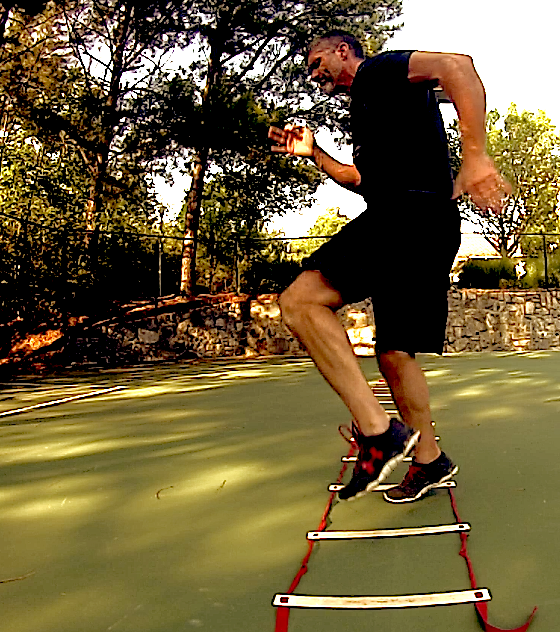
What Is Hybrid Training All About?
by: Brandon Richey
What Is Hybrid Training All About?

Today I’m going to address this relatively new term that describes a form of training that has essentially been around for a while. It’s known as hybrid training. The fact is that there are many ways to go about describing what a hybrid program is all about, but essentially it’s all about addressing different physical needs. I’ll explain in further detail if you would like to keep on reading my young Jedi.
Hybrid Training…
Over the past month or so I’ve been asked by a few different people about hybrid training. To be honest this specific term used to describe this certain training methodology is relatively new to even myself. Now to be clear the “name” is relatively new to my vocabulary, but the method is something that I’m very familiar with and have actually been coaching and practicing myself for years.
To clarify this I want you to think of a spectrum where one end of it is all about developing power (like a powerlifter) and the opposite end of the spectrum is all about pure muscular size (like a bodybuilder). The way you develop a strength program is either to do so by catering to power/strength or to all out muscular size, right? I mean it could be one or the other depending on the athlete. Well the fact is that you have a 3rd option that you may have not thought about up until now and this is the hybrid option.
If you can imagine this spectrum I’m talking about with one end being all about power and strength and the other relating to size and muscular endurance, then hybrid training would involve an athlete that trains by developing characteristics from both ends of this spectrum within the scope of their respective strength and conditioning programs. The difference in muscular development depends on the manipulation of variables that build muscle for strength and those that build muscle for size.
Power<_______________Hybrid_______________>Size
A great example of this would be to look at the type of athletes that may qualify as more of the “Hybrid” athlete. I would categorize rugby, hockey, and american football players as hybrid athletes due to the specific demands of their sport. They’ve got to have power and size, but they’ve also got to be able to run, jump, and be agile.
This is a great resource for explaining hybrid training a bit further

Once again, if you are trying to meet the needs of developing power you’re going to program some heavy reps on some major lifts. The principle I follow, which is also stated in the video, is that I may aim to develop more strength and power on a major lift such as my deadlift, but then I might incorporate more high volume repetitions for additional size/endurance development such as adding in more high volume deadlifts, or to gain more work volume in a different exercise altogether such as with medicine ball throws or kettle bell swings.
Once again the difference is just about manipulating variables for the desired purpose of your training. To reinforce what the video pointed out sets of 1 to 5 reps will encourage the power factor where sets of 8 reps and beyond will encourage more muscular size and endurance. As I stated earlier manipulation of these variables has been around for years, but the buzzword of hybrid training has come along as another means to describe this particular method of implementation.
Here’s another great way to feed your hybrid training program!

Let’s not forget that these methods can be varied further by manipulating the speed at which lifts are performed and with adding in varied resistance (such as with bands, chains, etc.) by changing up the TUT (Time Under Tension) variable.
As I pointed out earlier football players have to incorporate hybrid training because they are hybrid athletes due to the demands of their sport. This is why I have always enjoyed what is described today as hybrid training because the stress of training heavy along with developing speed and endurance presents sort of sick and enjoyable way to train that I’ve personally bought into! 🙂
I’m sure I’m not alone in that. If you noticed at the beginning of this article I put an old school photo of Dick Butkus up pulverizing a Green Bay Packer as the intro picture to the article. Now I can’t personally attest to what Dick Butkus’s strength program involved back in the day, but he clearly didn’t have an issue with having developed both size and agility for the game of football even during the “old school” days of the NFL.
Bodyweight can be a part of the hybrid training mix!

I know what you’re thinking. “Then coach why did you choose Dick Butkus for the picture?” Well my young Jedi I chose him for the picture and for the following video to further demonstrate my point of what a hybrid athlete is all about, and because for no other reason other than the fact that I think Dick Butkus is pretty damn cool. For my younger viewers make sure you pay attention because this was a real football player!
I hope you enjoyed that little demonstration along with today’s article on hybrid training. If you did then please make sure you leave your questions and comments in the box below this article. Remember that most anyone can train hard, but only the best train smart my friend. Start your smart training today!
Related Articles:
5 Ways To Turn Up Your Strength Training Program To Awesomeness Level!
3 Solid Strength Training Tips For Young Athletes…
The Importance Of Innovation In Building Strength!
Strength And Conditioning…The Method Behind The Madness!
What Is Hybrid Training All About?
Leave a Reply
You must be logged in to post a comment.






Hey Brandon, yet another on point article and this is an article I would consider to be a “primer” for those who are in the fitness game for life. As you noted, there is a world of variations available and goals, for me, inform the training approach I am using at any given point in time. These days, I’m working isometrics, body weight, and elastic bands as my hybrid of choice. I’m making some solid gains which is no easy feat for someone my age.
The overall frame of reference remains constant throughout the week, namely, I Push, Pull and Squat using a 6 days on and 1 day off approach. Not only do I get the mental benefits of variety in my weekly work out, I also harvest the physical benefits as well. By constantly running into something different my body is not afforded the luxury of reaching anything like maximum adaptive response. I’ll continue using my current work out routine until such time as my gains/improvement goes flat line or I tire of it mentally.
Your emphasis on training “intelligently” is something that I really appreciate. So many are slaves to dogma and when they finally wake up one day only to realize they really haven’t improved much at all in “X” amount of time they think they are resource impoverished with no way out. Lots of ways out given a person does the work necessary to become authentically informed as opposed to a rote spouting parrot. Intelligent training is the key.
Doc once again great stuff as usual! Yes, the key is variation and I’m always even working to remind “myself” of that variable too. I like variation, but not so much that skill is lost for certain foundational things.
It sounds like you have a solid strength program. The thing I always try to do is to work on implementing the different “types” of strength. For instance, absolute strength, speed strength, strength endurance, dynamic strength, and static strength can all be achieved through a diversified program just like yours.
For me personally I like to move weight, move it often, and even move it fast. Thanks again for your suggestion on touching on Hybrid strength! Your feedback is awesome and very helpful. Thanks again my friend.
Brandon how would you put a powerlifting program with a kettlebell swing cardio conditioning program in the same week. How would you do this? Also make sure if you would email me back not only with the answer but explaining how I go back to find my answer. I always do something wrong because I go back to the exact spot I am at now but I never see the answer until you send me the website. Thanks as always and God Bless
Rick, Yes you can include kettle bells into your training if you are implementing a powerlifting type of model. If you read back over this article carefully it’s sort provides a “Hybrid” model that you’re looking for being that pure power isn’t the emphasis all the time. You can still engage deadlifts, squats, and bench for normal traditional powerlifting moves and after your set of deadlifts, squat, or bench you can include a set of kettle bell swings, or snatches into the mix as I mentioned in the article for more of a speed/endurance conditioning component.
If I were going to include kettle bell swings into the same workout I would go ahead and complete my 5×5 or 5×3 on deadlifts or bench press and then incorporate kettle bells after you finish with your major lifts. This is just my preference. You can do supersets, but it sounds like you want to focus on lifting heavy so I would split them up as I am stating here. Thanks again Rick.
Great article Brandon, I would also like to add that I’m also a fan of Elliott Hulse. I understand what he’s saying about myofibrillar and sarcoplasmic hypertrophy and the chart that you put up emphasizing one end of the spectrum training for power and absolute strength while the other is more hypertrophy and endurance. I would also like to say that while you can emphasize one type of hypertrophy over the other, I don’t think that they can be seperate and we should get caught up and numbers and rep ranges while other factors are ignored. I would like to say that I’m training in a higher rep range to emphasize more hypertrophy for body composition and strength endurance b/c focusing purely on neural efficiency can be very dangerous. I would also invite you to look into powerlifters such as Eric Spoto and Lamar Gant who both include very high reps into their training. Overall, I think we can just get stronger using different rep ranges as long as progressive overload is still being achieve and we shouldn’t get caught up in an equation emphasizing one thing over the other.
Minh I appreciate the feedback. You bring up some excellent points about training for emphasizing more strength, and for emphasizing more muscular size. Whatever an athletes goals may be it’s fine to pursue what you want your goals to mostly produce, however keep in mind that by emphasizing more muscular size your training will naturally involve those factors that do so by engaging in training in higher rep ranges (such as 6 to 12 reps and above) and by training the muscle to failure with burnouts and drop sets.
If this is the type of stress you are introducing to the body then this will absolutely help with muscular size. On the opposite end of the spectrum (1 to 5 reps) you are going to be emphasizing more pure power and strength. You pointed out that it is a good idea though to adjust these rep ranges in order to give the body a break from pounding super heavy weight all the time. It is my belief that this is a great idea. However, if an athlete is adhering to a smart periodization and proper cycling plan in the first place then these intensities should already naturally be adjusted for helping the athlete to obtain their respective level of performance come either game day or competition time.
The point of this is that this hybrid training model is a model that introduces both elements of muscular size and strength to the athlete. It includes a balance of both attributes that can be specifically scaled for the athlete in question. I’m glad you found this an interesting one. Thanks again for the feedback Minh! Please don’t be a stranger.